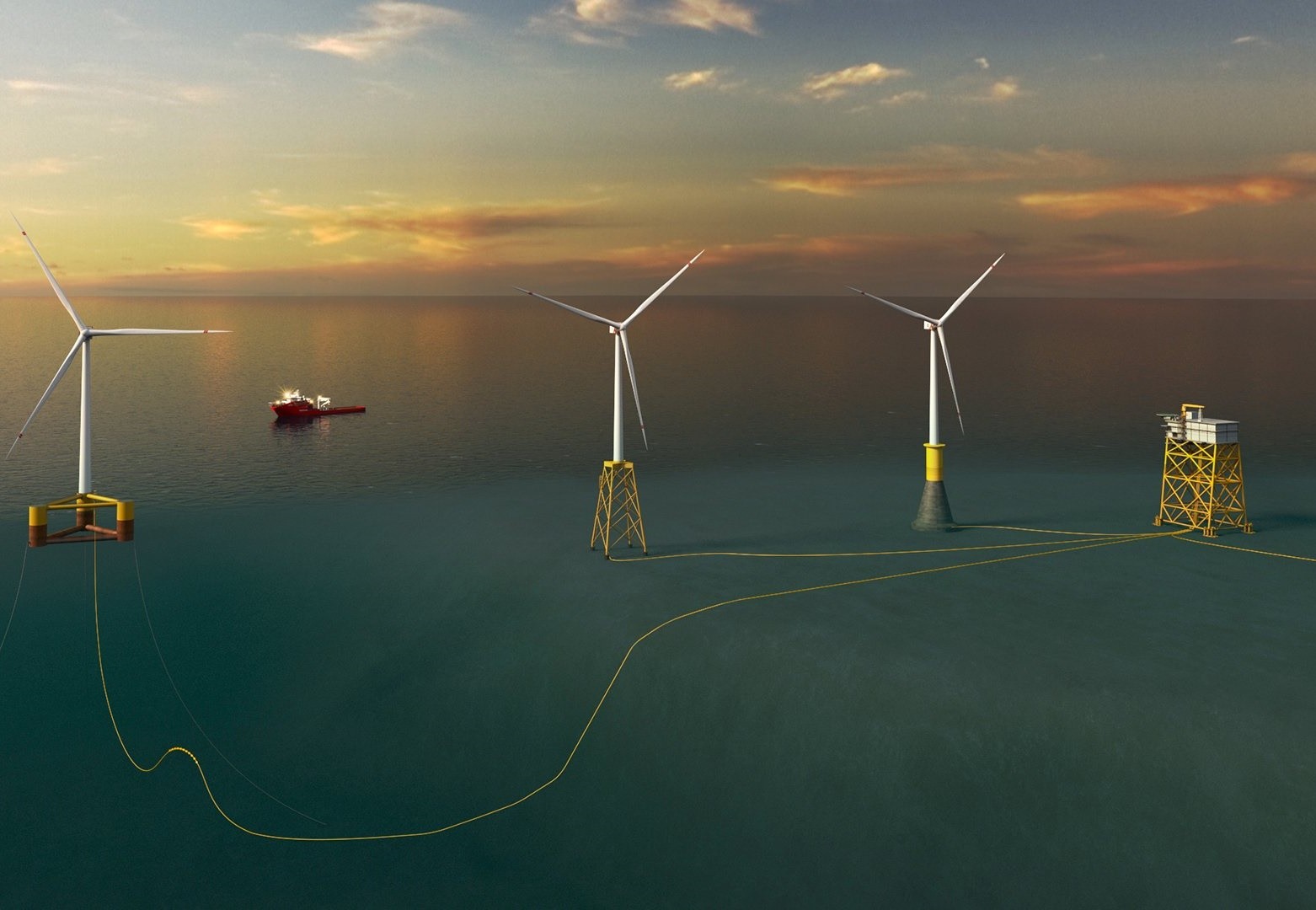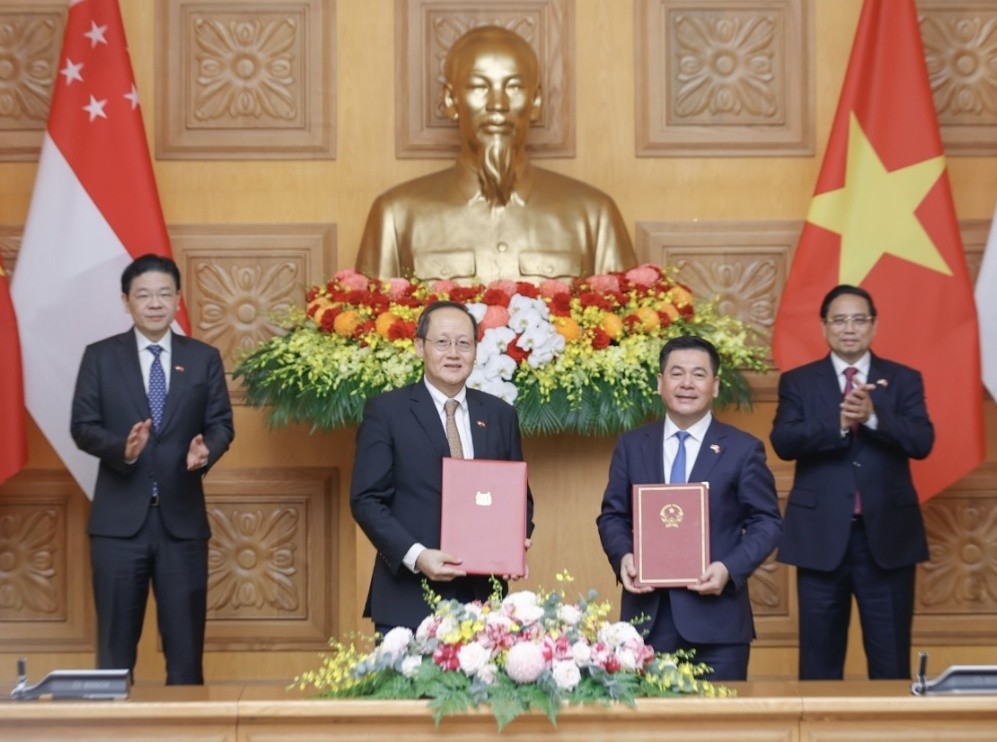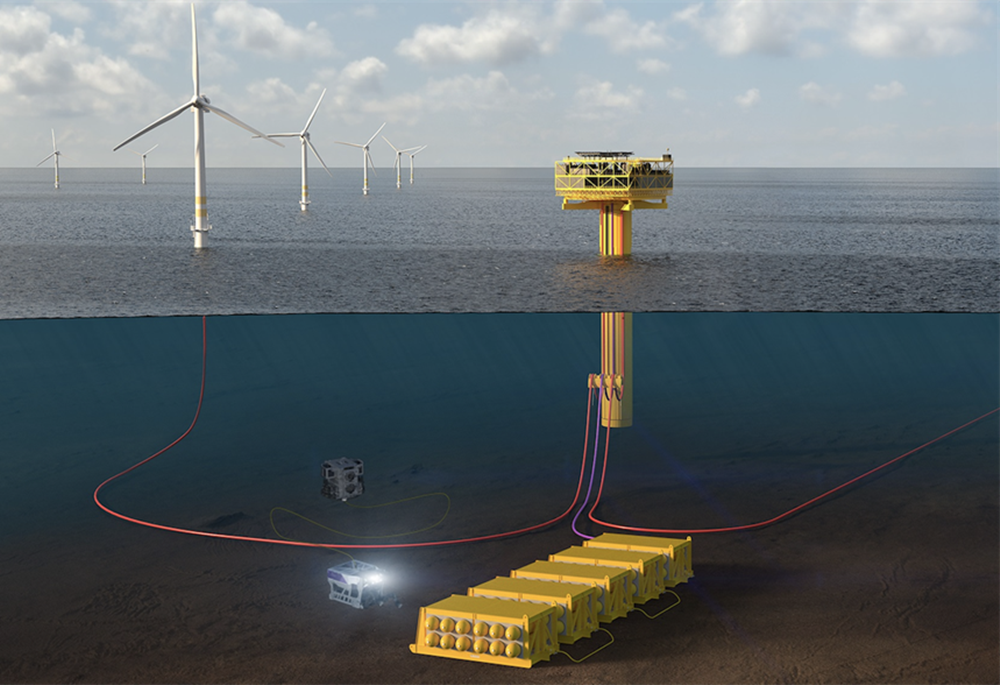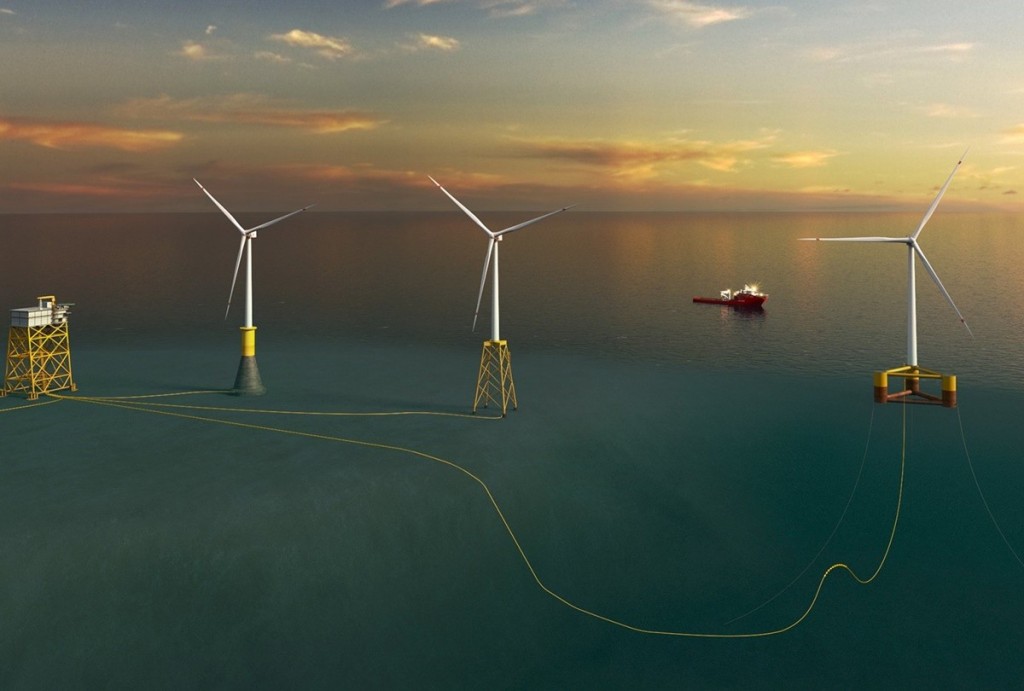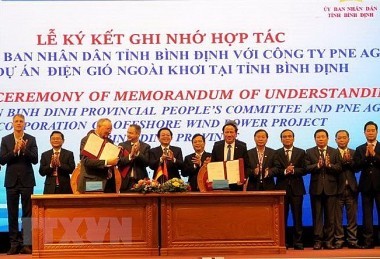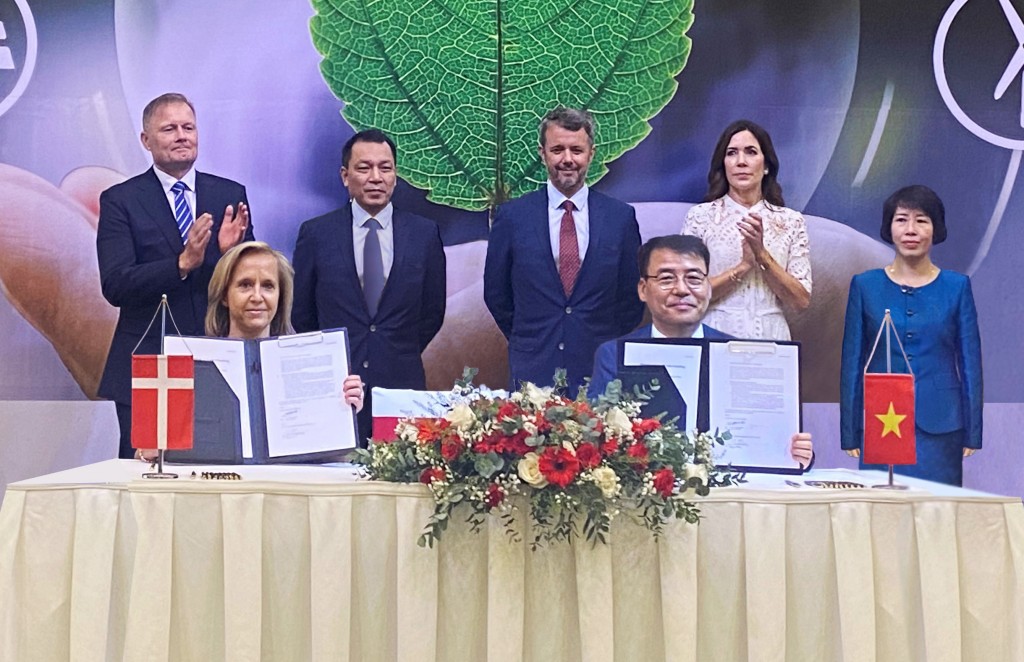Current Status of Offshore Wind Power and Development Direction in Vietnam
17:28 | 12/09/2023
1. Offshore Wind Power and Development Policies in the world
The recent global trend makes an effort to reduce greenhouse gas emissions to solve climate change which shall increase demand for low-carbon renewable energy sources.
According to a report published by the International Renewable Energy Agency (IRENA) in October 2020, Renewable energy sources (RES) are able to generate 130,000 TWh per year (twice as much as the current global electricity consumption).
According to historical development, global renewable energy has made a significant progress following key milestones such as the Kyoto Protocol (1999), the Paris Agreement (2015), and the SDG Millennium Goals aiming at reducing greenhouse gas emissions which has been the main reason for the global climate change since 2015 with 50 GW of wind power and 15GW of solar power. By the end of 2018, total capacity reached 590 GW wind power, and 400GW solar.
According to IRENA's forecast, the annual speed of renewable energy installation currently stands at 109 GW of wind power and 54 GW of solar power per year, 300 GW/200 GW per year by 2030, and 360 GW/240 GW per year by 2025. The current contribution of renewables to the total electricity supply is 25%, which is expected to rise to 57% by 2030 and 86% by 2050.
Energy technology which has been modernized helps solar and wind farms reach capacities of hundreds of MW. Offshore wind energy has been converted into electricity through high-capacity wind turbines (up to 16 MW - 20 MW) which are manufactured with long lifespans (up to 25 - 30 years), rapidly decreasing costs, and suitability for harsh offshore conditions.
Offshore wind power is a method of electricity generation that harnesses wind energy from the sea, converts it into electrical power, and supplies it to the onshore electricity transmission grid. The offshore wind farms in Vinderby, Denmark which were installed 30 years ago with a lifespan of 25 years have been removed.
Offshore wind power is a proven technology that has been implemented on a large scale in many countries such as China, Denmark, Germany, the Netherlands, and the United Kingdom. For many nations, offshore wind power holds promise as a large-scale, clean, reliable, and economical potential method of electricity generation in the near future.
By 2022, over 57.6 GW of offshore wind power have been installed in the world, China is the leader with 25.6 GW accounting for 44% of the total capacity, followed by the UK (13.6 GW), Germany (8 GW), and the Netherlands (3 GW). The number of offshore wind projects is growing rapidly in 2021, 2022, and the following years. In particular, in Guangdong, China, it is estimated that 30 GW will be installed by 2030. In 2022, China has accounted for two-thirds of the global offshore wind power, installing 6.8 GW in total 9.4 GW of the worldwide.
The International Energy Agency (IEA) predicts that by 2040, there will be $1 trillion invested in offshore wind power and Asia accounts for over 60% of this investment. In 2019, China had 4 GW of offshore wind power, which has now exceeded 25.5 GW, surpassing Europe's offshore wind power capacity, and is expected to reach 110 GW by 2040 and 350 GW by 2050.
The policies and laws regarding renewable energy in some exemplary countries such as China, Denmark, the United Kingdom, and Germany are considered quite advanced and comprehensive. The enactment of renewable energy laws and the promotion of renewable energy development in general and offshore wind power in particular since the early 2000s has brought significant achievements for these countries.
In particular, Denmark plans to achieve a 50% electricity consumption from offshore wind energy by 2030. The United Kingdom has successfully developed numerous of the world's largest offshore wind projects. However, the construction of offshore wind projects also faces various difficulties and challenges, such as land ownership disputes, marine resource conflicts, and environmental protection issues. Therefore, it is necessary to cooperate between nations and international organizations to establish an appropriate legal and policy framework for offshore wind development as well as to ensure benefits for related parties and protect the environment.
Recently, the United States and Australia have implemented specific policies as well as added more other laws for offshore wind power, The Bureau of Ocean Energy Management (BOEM) in the USA and the Department of Energy and Climate Change in Australia are organizations established to manage and permit for offshore wind power projects.
2. Offshore Wind Power and Development Policies in Vietnam:
Vietnam has committed to achieving net-zero carbon emissions by 2050. Onshore, nearshore, and offshore wind power are expected to comprise the largest rate of total electricity generation in Vietnam by 2045 (according to the Power Development Plan VIII). The development of offshore wind power not only harnesses substantial energy potential but also aligns with the vision of economic development in coastal areas.
Vietnam has committed to achieving carbon neutrality (net-zero emissions) by 2050 on the international stage. Wind power sources onshore, nearshore, and offshore are projected to make up the largest proportion of the total electricity generation by 2045 (as per the draft of Power Development Plan VIII). Developing offshore wind power not only taps into vast energy potential but also aligns with the vision of advancing the blue economy.
In the near future, the electricity sector is facing several challenges in meeting the demands for economic growth. Some major challenges include the continuously increasing electricity demand and the depletion of primary energy sources, which may necessitate early fuel imports.
Renewable energy development, including offshore wind power, is considered a breakthrough solution.
Offshore wind power potential in Vietnam is approximately 600 GW. In which, offshore wind power technical potential: 261 GW of offshore wind power with fixed foundation (at a depth of <50 m), 338 GW of offshore wind power projects with floating foundation (at a depth of <50 m.). There are places where the annual speed exceeds 10 m
The Power Development Plan VIII drafted by the Ministry of Industry and Trade on December 2022 has set a target the development of about 7GW of offshore wind power by 2030 and 87 GW by 2050
Vietnam Offshore Wind Roadmap Report published by the World Bank in 2021 presents a high scenario of 70 GW by 2050, with a vision of a successful country in the offshore wind industry and believes that Vietnam may rank third in Asia to China and Japan. The investment rate for 1 MW of offshore wind power has decreased sharply from 2012 with 255 USD/MWh to now about 80 USD/1 MWh and after 2030 it will be about 58 USD/1 MWh.
Key policies related to renewable energy and offshore wind power in Vietnam include:
To achieve appropriate strategic directions for development and harnessing marine energy sources, the 8th Central Committee's 12th Tenure of the Communist Party of Vietnam issued a Resolution on the Sustainable Development Strategy for Vietnam's Maritime Economy to 2030, with a Vision to 2045 (Resolution No. 36-NQ/TW dated October 22, 2018). This resolution submits breakthroughs in the development of the maritime economy. Point No.6 of the Resolution emphasizes "Renewable energy and new maritime economic sectors."
On February 11, 2020, General Secretary Nguyen Phu Trong signed and issued Resolution No. 55-NQ/TW, regarding directions for Vietnam's National Energy Development Strategy until 2030, with a vision to 2045 including relating contents "Building support policies and breakthrough mechanisms for offshore wind power development associates with the implementation of Vietnam marine strategy."
The draft of PDP VIII, with its target of 87 GW of offshore wind power, has not been officially approved at this time.
Licensing issues related to offshore wind power surveying:
-
Vietnam's Maritime Law (June 21, 2012).
-
Law on Marine Resources, Environment, and Islands (June 25, 2015).
-
Planning Law No. 21/2017/QH14 (November 24, 2017).
-
Government Decree No. 11/2021/NĐ-CP (February 10, 2021) regulating the allocation of specific marine areas for organizations and individuals to exploit and use marine resources.
-
Prime Minister's Decision No. 39/2018/QĐ-TTg (September 10, 2018) regarding amending and supplementing some provisions of Decision No. 37/2011/QĐ-TTg (June 29, 2011) on support mechanisms for wind power projects in Vietnam. Article 8 stipulates that "Commencement of wind power project construction: Investors are only allowed to commence construction of the wind power project when... wind measurement data has been collected continuously for a minimum of 12 months.
-
Circular No. 02/2019/TT-BCT (January 15, 2019) from the Ministry of Industry and Trade, outlining the implementation of wind power project development and model power purchase agreements for wind power projects.
The Ministry of Natural Resources and Environment has supplemented some provisions regarding regulations on the documentation, approval process, and issuance of measurement, survey, and evaluation of marine resources in Decree No. 40/2016/NĐ-CP dated May 15 2016 and Decree No. 11/2021/NĐ-CP. List of required documents as follows:
-
Application of Approval Proposal of marine measurement, survey, and evaluation activities, as per the template attached to the Decree.
-
Business registration certificate of the organization or individual, and agreements (if applicable).
-
A Statement of marine measurement, survey, and evaluation activities.
-
A map of the proposed marine area for measurement, survey, and evaluation which shows the coordinates of the area per the template attached to the Decree.
| Provinces (registered in DPD VIII) | Number of projects | Capacity (MW) |
| Quang Ninh | 2 | 6000 |
| Hai Phong | 5 | 16200 |
| Thai Binh | 2 | 3700 |
| Nam Dinh | 1 | 12000 |
| Thanh Hoa | 1 | 5000 |
| Ha Tinh | 2 | 1050 |
| Quang Binh | 5 | 4109 |
| Quang Tri | 4 | 3600 |
| Binh Dinh | 7 | 8600 |
| Phu Yen | 2 | 850 |
| Ninh Thuan | 14 | 25802 |
| Binh Thuan | 10 | 30200 |
| Ba Ria – Vung Tau | 6 | 3760 |
| Tra Vinh | 7 | 10300 |
| Soc Trang | 4 | 4900 |
| Ben Tre | 8 | 6460 |
| Bac Lieu | 10 | 5255 |
| Ca Mau | 6 | 8055 |
| Total | 96 | 156286 |
List of 96 projects registered until 2020 (Source: Energy Institute, Ministry of Industry and Trade
Currently, two projects which are permitted for wind measurement include TLW Binh Thuan (2,700 km2) for wind measurement and comprehensive survey and Ben Tre (only wind measurement with 36 m2). There are 41 projects that have applied for licenses for offshore wind energy surveys.
The benefits of offshore wind power include:
-
Offshore wind power is considered a breakthrough solution to ensure national energy security, reduce dependence on imported fuels, and decrease emissions of pollutants and greenhouse gases.
-
Create hundreds of thousands of jobs, promote local economic and social development, improve the livelihood of local people in the preparation, construction, and decommissioning phase, and provide high-quality employment opportunities for the domestic workforce in the development phase.
-
The underwater foundation structures of offshore wind turbines can act as artificial coral reefs, attracting various species of plankton and small fish, directly impacting the food chain for larger marine organisms. The marine ecosystem will gradually be restored and become a natural conservation area.
3. Proposed Solutions for Offshore Wind Power Development in Vietnam:
With the goal of meeting electricity demand, ensuring energy security, diversifying energy sources, and providing stable, reliable electricity to support the country's economic, social, and national security development, it is essential to build a strategy for offshore wind power development in Vietnam as a strong offshore wind power nation (a nation with a strong marine economy).
Some proposals include:
Firstly, Conduct early research to establish a legal framework for offshore wind power development (laws, along with other documents, decrees, circulars, technical regulations, and national standards for offshore wind power).
Secondly, Nominating a department who shall be responsible for the national master plan on offshore wind power development and provide a one-stop licensing service for offshore wind power projects.
Thirdly, Promoting the production and localization of equipment for offshore wind power development and use.
Fourthly, Planning for short-term and long-term cooperation with international organizations for the development of human resources, and training regarding offshore wind energy.
Fifthly, Enhancing information and communication and raising awareness among the public and communities regarding developing and using offshore wind energy.
Sixthly, Strengthening international cooperation
Seventhly: Establish supportive policies and innovative mechanisms for offshore wind power development associated with the implementation of Vietnam's marine strategy.
Eighthly, Applying to Implement green credit and carbon policies for offshore wind power.
References:
-
Resolution No. 36-NQ/TW of October 22, 2018, on the Sustainable Development Strategy for Vietnam's Marine Economy until 2030, with a vision to 2045.
-
Resolution No. 55-NQ/TW on the direction for Vietnam's National Energy Development Strategy until 2030, with a vision to 2045.
-
GWEC, 2022, Global Offshore Wind Report 2022.
-
World Bank, 2021. Development Roadmap of Vietnam Wind power by 2050
-
Australia, Offshore Electricity Infrastructure Regulations 2022.
Prepared by: Mr Pham Quoc Sy – Technical Director of IPC group.

